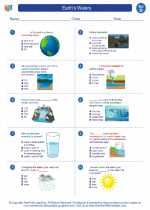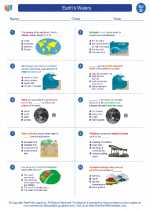Transformer Explanation and Study Guide
What is a Transformer?
A transformer is an electrical device that is used to transfer electrical energy between two or more circuits through electromagnetic induction. It is a crucial component in the transmission and distribution of electrical power.
How Does a Transformer Work?
A transformer consists of two coils of wire, known as the primary and secondary windings, which are wrapped around a core made of ferromagnetic material. When an alternating current (AC) flows through the primary winding, it creates a changing magnetic field in the core. This changing magnetic field induces a voltage in the secondary winding, which allows for the transfer of electrical energy from the primary circuit to the secondary circuit.
Key Components of a Transformer
- Core: The core provides a path for the magnetic flux generated by the primary winding and helps to improve the efficiency of the transformer.
- Primary Winding: This is the coil of wire that receives the input electrical energy.
- Secondary Winding: This is the coil of wire where the output electrical energy is transferred.
Types of Transformers
Transformers can be classified into several types, including:
- Step-Up Transformer: Increases the voltage from the primary to the secondary winding.
- Step-Down Transformer: Decreases the voltage from the primary to the secondary winding.
- Isolation Transformer: Provides electrical isolation between the primary and secondary circuits.
- Auto-transformer: Has a single winding with a tap point to provide different output voltages.
Transformer Efficiency and Applications
Transformers are designed to be highly efficient in transferring electrical energy, with typical efficiencies ranging from 95% to 98%. They are widely used in various applications, including power distribution, electrical appliances, electronic devices, and industrial machinery.
Study Guide
Here are some key points to remember when studying transformers:
- Understand the principle of electromagnetic induction and its role in transformer operation.
- Learn the relationships between primary and secondary voltages and currents in step-up and step-down transformers.
- Recognize the significance of transformer efficiency and its impact on power transmission and energy conservation.
- Be familiar with the different types of transformers and their specific applications.
- Practice solving problems related to transformer voltage, current, and power calculations.
By mastering these concepts, you will be well-prepared to understand and analyze the role of transformers in electrical systems and their importance in modern technology.
[Transformer] Related Worksheets and Study Guides:
.◂Science Worksheets and Study Guides Fourth Grade. Earth's Waters

 Worksheet/Answer key
Worksheet/Answer key
 Worksheet/Answer key
Worksheet/Answer key
 Worksheet/Answer key
Worksheet/Answer key
 Vocabulary/Answer key
Vocabulary/Answer key
 Vocabulary/Answer key
Vocabulary/Answer key
